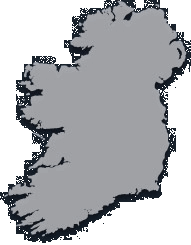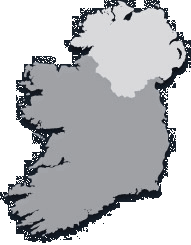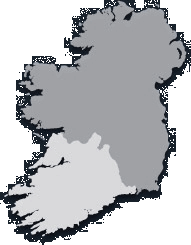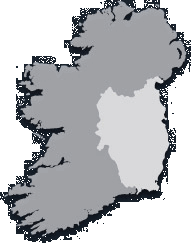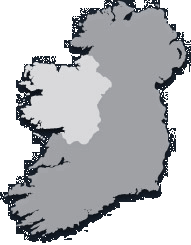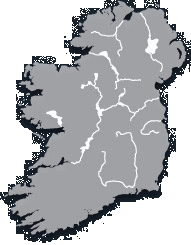
Traditional Boats of Ireland Book
History, Folklore and Construction
Read reviews/press release & see inside
- Recorded Boats
- 12ft punt
- A. K. Ilen
- Aigh Vie - Manx Nobby
- Curach Adhmaid
- Currach - Blasket Island
- Currach - Inisheer Island
- Currach - Inishturk Island
- Currach - Inishkea Island
- Currach - Scattery Island
- Drontheim
- Fishing Smack - Richard Hall
- Free State
- Galway hooker
- Galway Hooker - Gleoiteog
- Hanorah - Heir Island lobster Boat
- Kerry Naomhóg
- Kinsale Hooker
- Lake Angling Boat - Lough Corrib
- Lough Erne YC - Model 1
- Lough Erne YC - Model 2
- Lough Erne YC - Model 3
- Lough Erne YC - Model 4
- Lough Erne YC - Model 5
- Lough Erne YC - Model 6
- Lough Erne YC - Model 7
- Lough Erne YC - Model 8
- Lough Erne YC - Model 9
- Naomh Brigid
- Naomh Lua
- Rankin dinghy
- Saoirse
- Seine Follower Boat
- Tern - Hegarty Lobster Boat
- Three Hand Kerry Naomhog - Model
- Topaz - Manx Nobby
- Water Nymph 1885
- West Cork Mackerel Yawl
- Boatbuilders
- Jimmy Furey
- Walter Levigne
- McDonalds - Model 1
- McDonalds - Model 2
- McDonalds - Model 3
- McDonalds - Model 4
- McDonalds - Model 5
- Tyrells - 35ft Motor Fishing Vessel
- Tyrells - Model 1
- Tyrells - Model 2
- Tyrells - Model 3
- Tyrells - Model 4
- Tyrells - Model 5
- Tyrells - Model 6
- Tyrells - Model 7
- Tyrells - Model 8
- Tyrells - Model 9
- Tyrells - Shipwright
- Daingean Museum Store
- Four Oared Boat
- Two-masted carvel-built boat
- GreenCastle Museum
- GreenCastle Museum Model 1
- GreenCastle Museum Model 2
- GreenCastle Museum Model 3
- GreenCastle Museum Model 4
- Turlough Park Museum
- Currach Collection
- Museum Interior
Copies and / or reproductions of material on the web-site shall Not be made without the express permission of Traditional Boats of Ireland."
Surveying Heritage Boats
The scope and depth of regional boat surveys will be ultimately determined by the scale of the resources available. However detailed the survey, considerable planning and preparation is required. A methodology should be agreed at the outset, and how the data recorded during the survey is preserved must also be determined in advance as this may have implications for the materials and equipment used in the field. The advice of the County Archivist and/or Librarian should therefore be sought as part of the survey planning process.
What to record
The Heritage Boat Association defines heritage boat as "any boat over 25 years old which is of significance because of it's intrinsic construction or because of it's association with the commercial, cultural, economic, industrial, military, political, social or other history of the country." This includes mainly work boats (fishing, trading and ferry boats), but also certain 'classic' pleasure boats. The majority of these types are of wooden construction, but will also include early steel and iron-hulled boats of coastal and inland waters. A number of steel curachs have even been produced which, because they still display traditional design principles, are worthy of inclusion in the survey. In certain cases GRP- (fibreglass) covered boats will also qualify - an example of these are small boats (including curachs) of traditional design coated with fibreglass to extend their lives, or GRP boats produced from moulds taken from wooden models. Some early GRP boat types are also important because they show the transition from timber to GRP construction, for example early GRP lake angling boats built by Sullivans. Recently-built GRP yachts, dinghys, punts etc., while they may acquire 'heritage' status at some future date, are not considered here.
In the course of surveying boats, it is also worth recording related objects (fishing nets and other equipment) and marine infrastructure (piers, jettys, slipways, sea walls, boatyards, boat houses etc.) as these represent the physical context of the craft.
Where to record
All coastal, estuarine, river, canal and lake contexts should be included in the survey. Though the character of coastal boats may differ noticeably from those of inland waters (where boat types are often of flat-bottom construction) the same general principles of recording and survey will apply. Some effort will also be required to identify locations away from the water, as there are many older working boats, and angling and pleasure boats, laid up in gardens and sheds around the country away from the water. Angling, sailing and rowing clubs would be the best avenue to identify these.
Preparatory Work
Before commencing field work, much useful preparatory work can be done. Field workers should familiarise themselves with all available literature dealing with boats in their region. They should also familiarise themselves with boat terminology - consistency in this regard is critical when the information which is recorded in the course of the survey is later analysed.
All potential locations of boats and related infrastructure should be marked clearly on maps in advance of the survey. It might prove useful to number all possible locations clearly on Ordnance Survey Discovery Series (1:50,000) maps before entering the field. When working in the field, the precise locations of boats etc. should be recorded as grid references. (A Global Positioining System [GPS] receiver would be of considerable use in this regard.) In the course of the survey, and when the process of cataloguing and archiving material begins later, a numbering system such as this will prove invaluable.
Field work can be greatly facilitated by establishing a network of potentially helpful contacts throughout the county. A number of days spent phoning local libraries, newspapers, local historians etc. may be of immense benefit in gaining access to otherwise hidden boats, and in smoothing the way for field workers. Bear in mind that some people may be suspicious of the survey's motives in recording the history of their boat (for a variety of reasons). Transparency is vital in this regard, and forward advertising and promotion of the survey will pay dividends in the field. Making prior contact with enthusiastic local residents (including boatmen, fishermen etc.) is critical to the success of the survey. Without the cooperation of local men and women, the past history of a boat cannot be ascertained.
The Boat Survey
The resources available to the survey team will determine the scope and depth of the exercise. To extract full value from the survey, a minimum amount of detail should be recorded for each boat or object. To this end field workers should complete a Boat Documentation Form for each boat, and keep a Photographic Log and Audio Recording Log (where relevant) while in the field. Guidelines for these are supplied below.
Equipment Teams of two (preferably three) are needed to measure large objects such as boats in an efficient and accurate manner. Each member should be equipped with a hand measuring tape (5 meter or 8 meter) and a more substantial tape measure (20 meter or 30 meter). A hinged measuring rod (2 meter or 3 meter) is extremely useful when measuring and photographing large objects, and a short (one foot) ruler is helpful for smaller objects.
A quality digital stills camera and digital audio recording device are essential tools for the field worker. Alongside the trusty notebook (with waterproof cover), a Personal Digital Assistant (PDA) device is useful for noting dimensions and other details. As mentioned earlier, a GPS device should also be considered. Professional advice should be sought in relation to purchasing and receiving basic instruction in their use.
Remember, you may never get a second chance to capture an image of a particular boat or event, or to record a valuable conversation a second time. Be sure and confident, therefore, in the handling of your equipment before entering the field.
Documenting a boat The following list is not exhaustive, and is designed to record only the principal features of the boat. It may not be possible to complete every entry for all boats encountered, but every effort should be made to do so. A simple sketch of the boat showing its plan and elevation should accompany the documentation form. Sketches of individual parts and construction details are also very useful.
- 1.Record number:
- 2.Field worker: (e.g. P. Murphy)
- 3.Project: (e.g. *** County Survey)
- 4.Boat type: (e.g. curach, yawl, punt, cot, barge etc.)
- 5.Location:
- 6.Owner:
- 7.Age of boat:
- 8.Place of construction / built by:
- 9.Boat use: (state if not in use, when last used, has it been converted for pleasure or other use)
- 10.Alterations: (visible signs of repairs and alterations to original)
- 11.Length overall:
- 12.Keel length:
- 13.Beam: (maximum width)
- 14.Depth: (this is the internal depth of the vessel, from the freeboard to the bilge)
- 15.Draft: (there may be draft marks on the stem-post or sternpost or a waterline painted on the hull from which measurements can be taken if its out of the water)
- 16.Hull type: (round-bottomed, flat-bottomed, keeled vessel)
- 17.Hull construction: (carvel [smooth], clinker [lapped strakes], canvas, fibreglass, iron or steel [is it riveted or welded, hand forged or blacksmith welded?], concrete, other)
- 18.Superstructure: (open boat, half/fully decked; does it have a cuddy, cockpit etc [of what material are these made?])
- 19.Propulsion: (engine [e.g. single/twin cylinders, fuel, cooling arrangement, make and model if discernible], clutch/gearbox arrangement etc., shaft/stern tube arrangement; steering mechanism; is there a rudder, what type? tiller or wheel steering, cable, chain etc.; prop size, form and material if discernible - iron, bronze, aluminium etc; sail [no. of masts, spars, sail type - gunter, sloop, fore and aft, lugsail, spritsail etc.], oars [record loom length, blade shape, whether clamped or rowlock]; horse drawn?)
- 20.Machinery: (radios, navigation and electrical equipment; winch, pot hauler etc.)
- 21.Equipment: (nets, dredges, pots, anchors, warps, tarpaulins, hatch covers, water containers; fittings such as cooking and lighting facilities etc.)
- 22.Condition: (Is the outer skin [plank, metal, canvas etc.] sound?; are parts missing; any signs of rot, splitting of timbers, loosening of caulking and paying in seams?; what condition are the [metal/wood/other] fastenings.)
Photographing the boat
Considerations of space and access will influence the range (and quality) of images that can be made. Boats are heavy and cannot generally be moved to a more convenient spot without help (and, most importantly, without the permission of its owner). Many small boats are stored upside down, and it can be awkward (even with the owner's permission) to right them. These limitations notwithstanding, every effort should be made to photograph the boat from a variety of angles. Assuming the boat is upright, and depending on its size, one may have to retreat some distance in order to capture the full profile (elevation) of the boat. Several frames should be shot of the boat in an arc of 180 degrees on its most accessible side, standing back several paces from the boat. Ideally, one's lens should be set at no wider than 35mm (preferably 50mm, which gives a more realistic perspective). A 35mm or wider lens (28mm max) can be used to capture individual construction elements up close, or to photograph the boat wholly or partially in a confined space.
Audio Recordings
On-the-spot recordings of boat owners and others form valuable archive records and are a practical means of documenting a large range of facts and figures which can be transcribed later. Details include the history, construction and use of the boat, but can also include local or dialect words for individual parts of the boat and its equipment. If permission to record a conversation is sought, clearly indicating the purpose and scope of the interview, few people will decline to cooperate.
Notes on information technology
General note The advice of the County Archivist and/or County Librarian with regard to information technology - specifically data storage and backup strategies - should be sought before embarking on field work. Digital preservation of field materials will occupy a portion of the time and resources of the survey team. Attention to this element of the work will ensure the long-term value of the project.
Audio recordings The current generation of "mini-disk" recorders do not enable one to upload a sound recording to computer directly. This is a serious disadvantage because only by transferring the recording to a computer can one make digital backup copies. A good, affordable alternative is the Roland Edirol, a recording device which will make 24-bit uncompressed recordings of high quality that can be copied to computer via firewire cable. Recordings should be preserved in uncompressed format such as ".wav" (Windows) or ".aiff" (Mac).
Digital photographs As with sound recordings, stills images should be preserved in an uncompressed ("lossless") file format. Digital cameras are generally set to preserve images in JPG format, a compressed ("lossy") format which degrades if opened and re-saved repeatedly. The accepted archive standard preservation file format is ".tiff" (or ".tif"). The picture quality of the camera should be set to "best" and the captured image converted from JPG to TIFF as soon as they are transferred to computer from the camera.
Críostóir Mac Cárthaigh
Colin Becker
John Kearon
12 December 2007

